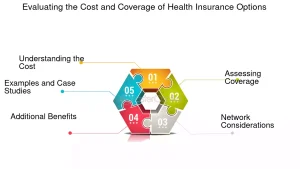Finding the right health insurance for families is a crucial task that requires careful consideration of various factors. With the rising costs of healthcare and the diverse needs of family members, understanding the available coverage options can help families make informed decisions that protect their health and financial well-being. This article explores the types of health insurance plans available for families, key considerations when selecting a plan, and tips for maximizing benefits.
 Understanding Family Health Insurance Coverage
Understanding Family Health Insurance Coverage
Health insurance for families typically covers all eligible family members under one policy. This can make managing healthcare expenses more straightforward while often providing cost savings compared to individual plans. Family health insurance plans are designed to accommodate the diverse healthcare needs of children, parents, and sometimes extended family members.
Types of Family Health Insurance Plans
- Employer-Sponsored Plans:
Many families receive health insurance through an employer-sponsored plan. Employers often offer a selection of plans, allowing employees to choose coverage that suits their family’s needs. These plans usually share costs between the employer and the employee, making them a popular and often affordable option. - Marketplace Plans:
The Health Insurance Marketplace allows families to shop for and compare plans from various insurers. Depending on income, families may qualify for subsidies to help lower premiums and out-of-pocket costs. Marketplace plans include various options, such as HMOs, PPOs, and EPOs, each with its own structure and benefits. - Medicaid and CHIP:
For families with low to moderate incomes, Medicaid and the Children’s Health Insurance Program (CHIP) offer essential coverage at little or no cost. These government programs provide comprehensive health services, including preventive care, immunizations, and hospitalization. - Private Insurance Plans:
Families can also purchase private health insurance plans directly from insurers outside of the marketplace. These plans may offer more flexibility in terms of provider choice and coverage options but can sometimes come with higher premiums.
Key Considerations When Choosing Family Health Insurance
1. Assess Your Family’s Health Needs
Understanding your family’s specific health needs is crucial for selecting the right insurance plan. Consider the following:
- Chronic Conditions: Do any family members have ongoing health issues that require regular treatment or medication?
- Frequency of Doctor Visits: How often do family members visit healthcare providers? Are there upcoming needs such as maternity care or pediatric visits?
- Preventive Care: Ensure the plan covers essential preventive services such as vaccinations, annual check-ups, and screenings.
2. Evaluate Coverage Options
When comparing plans, pay attention to the following coverage components:
- Essential Health Benefits: Under the Affordable Care Act (ACA), certain services must be covered, including emergency services, hospitalization, maternity and newborn care, mental health services, and prescription drugs.
- Pediatric Services: Ensure the plan covers pediatric care, including well-child visits, immunizations, and dental and vision services for children.
- Specialist Care: If your family members need to see specialists, check whether the plan requires referrals and whether your preferred specialists are in-network.
3. Understand Costs
Cost is a significant factor when choosing health insurance. Consider the following expenses:
- Premiums: The monthly fee for maintaining coverage. Look for a balance between affordable premiums and the coverage you need.
- Deductibles: The amount you must pay out-of-pocket before insurance coverage kicks in. Higher deductibles often mean lower premiums, but make sure you can afford the deductible in case of unexpected medical expenses.
- Copayments and Coinsurance: Understand how much you will pay for services. Copayments are fixed fees for specific services, while coinsurance is the percentage of costs you share after meeting the deductible.
- Out-of-Pocket Maximum: This is the total amount you will pay for covered services in a year. Once you reach this limit, your insurance will cover 100% of your medical expenses.
4. Provider Networks
Health insurance plans often have networks of providers. It’s essential to check whether your family’s preferred doctors, specialists, and hospitals are included in the plan’s network. Using in-network providers typically results in lower costs, while out-of-network care can lead to higher expenses or no coverage at all.
5. Flexibility and Accessibility
Consider the flexibility of the plan in terms of accessing care. Some plans may require referrals to see specialists, while others allow direct access. Additionally, consider the availability of telehealth services, which can provide convenient access to care and save time, especially for busy families.
Tips for Maximizing Family Health Insurance Benefits
1. Take Advantage of Preventive Care
Many health insurance plans cover preventive services at no additional cost. Schedule regular check-ups, vaccinations, and screenings for all family members to ensure proactive management of health issues.
2. Utilize Health Savings Accounts (HSAs)
If eligible, consider setting up a Health Savings Account (HSA) alongside a high-deductible health plan (HDHP). HSAs allow you to save money tax-free for qualified medical expenses, providing financial flexibility for healthcare costs.
3. Keep Track of Medical Expenses
Maintain a record of medical expenses to help manage your budget and understand healthcare costs better. This can also assist in tracking your deductible and out-of-pocket maximums throughout the year.
4. Review Your Coverage Annually
Health needs can change over time, so it’s essential to review your health insurance coverage annually during open enrollment. Assess your family’s current health situation and any changes that may affect your coverage needs.
 Conclusion
Conclusion
Choosing the right health insurance for families is a crucial decision that can significantly impact both health and financial stability. By understanding the various coverage options available and considering your family’s unique health needs, you can make informed choices that provide adequate protection and peace of mind.
As healthcare costs continue to rise, being proactive in selecting and managing your family’s health insurance can lead to better health outcomes and reduced financial strain. Take the time to explore your options, leverage available resources, and ensure your family has the coverage it needs to thrive.


